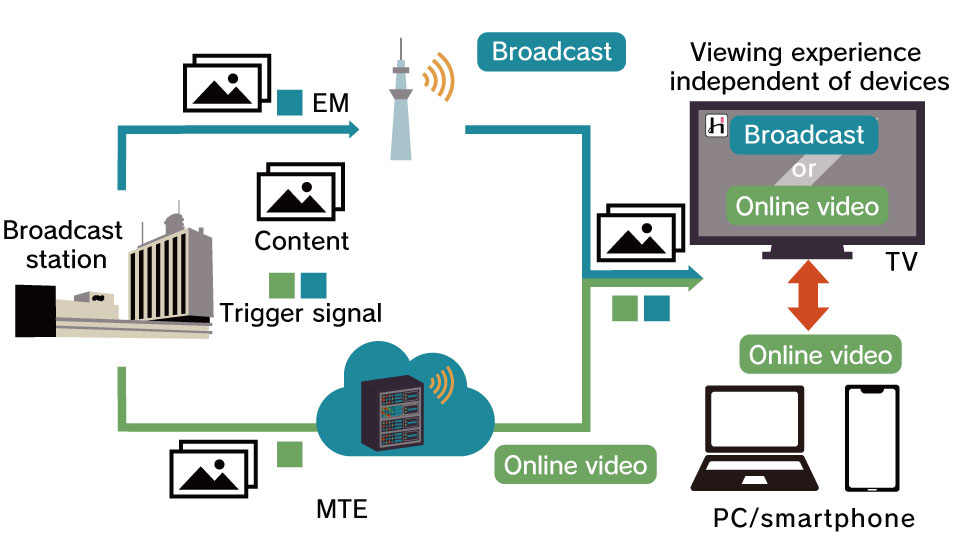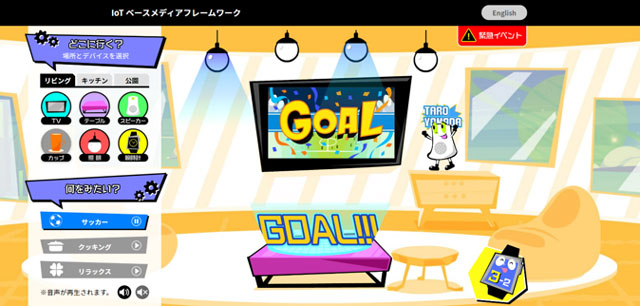Web-based Media Technologies for Diverse Viewing Environments
Exploring the future media utilizing Web technology

About
NHK is conducting research and development on using standard internet technologies to universally disseminate information and provide convenience and peace of mind to users when they use public service media.
Future vision of public service media (in 2030 – 2040)
– Media technology evolving with society –
As diverse technologies and services
become connected on the Web,
media technologies are also evolving.

NHK is advancing development of technologies that organically connects the three elements of “people,” “content,” and “environment (devices).”
Technologies for universal dissemination of media
To achieve universal delivery of public media content, NHK is developing technologies that allow users to enjoy content on both TVs and smartphones without being aware of the transmission path like broadcast waves or the internet. We are also developing technologies that use IoT devices with diverse functions to present content in response to users’ situations.
1) Receiver and distribution technologies that seamlessly use both broadcasting and internet transmission paths
■ NHK has developed a prototype receiver* that can switch seamlessly between broadcasting and internet transmission paths for viewing content.

NHK’s developed technology enables HTML5 applications on TV sets to handle both broadcast and internet content. Users can thus enjoy a smooth viewing experience without needing to perform any special actions, such as switching applications between broadcasting and the internet, to view content.
With this technology, users can enjoy a variety of programs delivered through broadcast waves and the internet with the same simple TV operations they have always used.
■ NHK has developed content distribution technologies to provide a consistent viewing experience to users, allowing them to enjoy content through the internet as they do with broadcast content.
To remove barriers between TVs, which use tuners to receive broadcasts, and smartphones and PCs, which receive contents via the internet, we are researching delivery and reception technologies that realize transmission path-independent services.
NHK is developing technologies such as trigger signal transmission to realize a consistent viewing experiences independent of viewing devices. Users will be able to enjoy content on smartphones and PCs the same way they do on broadcast TV.

MTE (Media Timed Events): Trigger signals that can be included in MPEG-DASH video streams. Used for purposes such as synchronization of Web content and a video. Based on Word Wide Web Consortium (W3C) recommended specifications.
2) IoT-based Media Framework for IoT devices for autonomous content presentation
NHK is developing an autonomous media presentation framework utilizing diverse functions of IoT devices. It uses semantic descriptions related to the three elements of “people, content, and environment (devices)” to deliver content optimally in response to users’ situations.

Open R&D achievements
NHK has released an MPEG-DASH player library for TV and a Hybridcast Connect software as open source software (OSS). Hybridcast Connect is a technology that links TVs, smartphones, and IoT devices.
To allow users to enjoy public service media in diverse environments, NHK is promoting development in cooperation with stakeholders in a wide range of fields, including service and application providers and receiver system and IoT device manufacturers.

